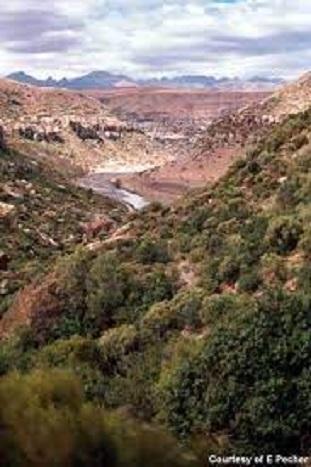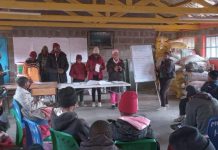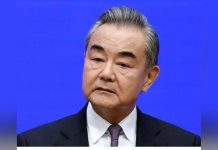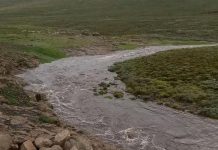Africa-Press – Lesotho. The Lesotho Highlands Water Project (LHWP) is multi-phased, multi-billion Maloti project between the governments of the Kingdom of Lesotho and the Republic of South Africa.
In terms of the 1986 Treaty the purpose of the LHWP is to harness, store transfer and deliver specified quantities of water from the Senqu River and its tributaries to South Africa and using that delivery system to generate electricity in Lesotho.
The Treaty further states that without prejudice to this purpose of the Project namely, water transfer and electricity generation, each of the two Parties to the Treaty may undertake ancillary developments in its territory. These ancillary developments include irrigation, development of tourism, fisheries and other projects for economic and social development.
In implementing the Project on behalf of the governments, the Lesotho Highlands Development Authority (LHDA) seeks to execute, operate and maintain the Project as efficiently and effectively as possible in order to meet the purpose for which it was established.
The National Strategic Development Plan II affirms that the “Lesotho’s growth performance is expected to be driven mainly by growth accelerators—mining and construction, especially with LHWP II 1.
” The Plan recognizes that there will be gradual growth with the implementation of Phase II of the Lesotho Highlands Water Project through capital injection of more than M27 billion during the construction phase and from revenue from water transfers.
The Project not only contributes through employment creation, business opportunities for companies, skills development, revenue for the fiscus, generation of electricity to reduce expensive imports but the construction of the dams and their associated infrastructure that include high quality roads and accommodation facilities have been instrumental in the promotion of tourism and growth in hospitality related services and products.
These tourism and hospitality products/services have a direct boost to the local spending, hence inclusive growth and a trickle-down effect on the economy.
A proper and accurate understanding of the Purpose of the LHWP is therefore necessary so that there is an appreciation of how the Project is implemented and what needs to be done so that its contributions to social development and economic growth of the country can be maximized while protecting the environment.
During the recent periods of drought, the water levels in the dams went as low as below 15% of the live storage. The period between September and November 2019 is one such bad patch.
There was a of lot anxiety regarding the future water transfers and the ability to generate electricity. It was thus with great sense of relief to witness the recent summer rains and see the water levels in the dams rising.
The prudent and correct approach in order to optimally operate the water conveyance system is therefore three pronged, namely to maximise storage of the water in the system; to ensure safety and structural integrity of the dam walls and to also ensure that the needs of the environment downstream of the dams are catered for.
This is precisely how the LHDA responded in taking advantage of the opportunity presented by these welcomed summer rains. Firstly, the Mohale tunnel was closed to isolate and increase the amount of water stored in the Mohale dam and thus improve the water storage.
Secondly, the increased inflows and the resultant rapid rising of the water levels in the Katse dam prompted the LHDA to also increase the release of water into the downstream environment.
In terms of the Environmental Flow Releases (EFRs) policy, a certain percentage of the water entering the dams (inflows) must be released downstream. The releases are adjusted on a daily basis.
However, due to design limitations this target of downstream releases is not always achieved through the continuous release of water through the compensation (smaller) outlets hence a deficit accumulates over time.
This deficit is released as high flows through the bottom/low level (larger) outlets during or at a time as close as possible to the period of heavy rains and high inflows to the Dams. All the above are fundamental to good management of the LHWP.
Many people who are not familiar with the operational requirements as stated above, believe that the dam can be “allowed” to spill, even timing such a spill to coincide with particular dates when tourists can have the opportunity to see this spectacular event.
It was also argued that “having the highest dam in Africa spillover would surely contribute to the hard-hit tourism sector. ” The media went overdrive with the public requesting the LHDA to let the Dam spill over the Christmas holidays.
It was argued that this would be an opportunity to kickstart the economic recovery which has been adversely affected by the onset of Covid-19. It was lamented that “instead of ensuring that the dam overflows either on the 31st December 2021 or 1st January 2022, the LHDA (sic) “decided” to have the dam overflow on the 3rd January 2022!”
This reasoning ignored the fact that the spilling of the Dam depends not only on the amount of inflows over and above what the Project stores in the dam for continuous water transfer purposes but also over and above the mandatory environmental flow releases downstream. It ignores the fact that the LHDA does not control the amount of rains and hence inflows into the Katse Dam.
One article even went as far as pronouncing that “the LHDA is intentionally throttling our economy, (by) deciding to open small gates to let water into the Maliba-Matšo river on the 30th and 31st December 2021………and wanted to ensure that the Katse dam wouldn’t overflow on the 3rd January 2022 as they’ve announced”.
The line of reasoning here is that after having announced ( not projected with a proviso) that the Dam would likely spill on the 3rd January, the LHDA decided to work against its own “announcement” and instead released the water downstream to ensure that what they have announced does not happen.
This reasoning goes against the standard practice of how reservoirs (loosely referred to as Dams) are supposed to be operated. This shows that there is no appreciation that spilling occurs when the water storage is full and the inflow is high such that even after the required downstream releases, the water overflows or overspill naturally.
The Lesotho Highlands Water Project (LHWP) does contribute significantly to socio-economic development needs of the country. It continues to be one of the two economic growth accelerators.
It is with the proper understanding of the purpose and role of the Project and the manner in which it has to be implemented that it can be correctly recognised as a growth accelerator as NSDP II affirms.
For More News And Analysis About Lesotho Follow Africa-Press






